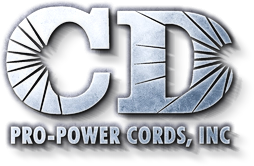
The make up of the wire is written in a series of letters, such as SJOW or SVT. This information also appears on the cardboard jacket that many extension cords are packaged in, which can be confusing to consumers unfamiliar with their meanings. Once someone knows these ratings, they will be able to choose the best cord for a specific job. Below are some of the more common letters found on wire and cords.
- S – Service. This wire is rated for 600 volts.
- J – Junior, or Junior Service. This wire is built the same as S wire, however it is rated for 300 volts, and the jacket has less insulation.
- T – Thermoplastic, or PVC compound used to make the insulation.
- E – Elastomer. Indicates compound developed to allow cold weather flexibility and all weather use.
- O – Oil Resistant. When there is only one O, it means that the outer jacket is oil resistant.
- OO – Oil Resistant. When there are two O’s, it means the outer jack of the cord is oil resistant as well as the insulation surrounding the conductors.
- P – Parallel. Wires are parallel to each other; the cord is flat instead of round.
- V – Vacuum. This cord is designed for use on vacuum cleaners where there is constant movement, requiring the cord to be flexible.
- W – All Weather. The cord can be used indoors and outdoors because it is water and weather resistant.
Knowing the meanings of the above letters, a consumer could look at a 16/3 SJTW cord and know that it has 3 conductors, and is a 16 gauge thermoplastic cord rated at 300 volts that can be used indoors and outdoors.
